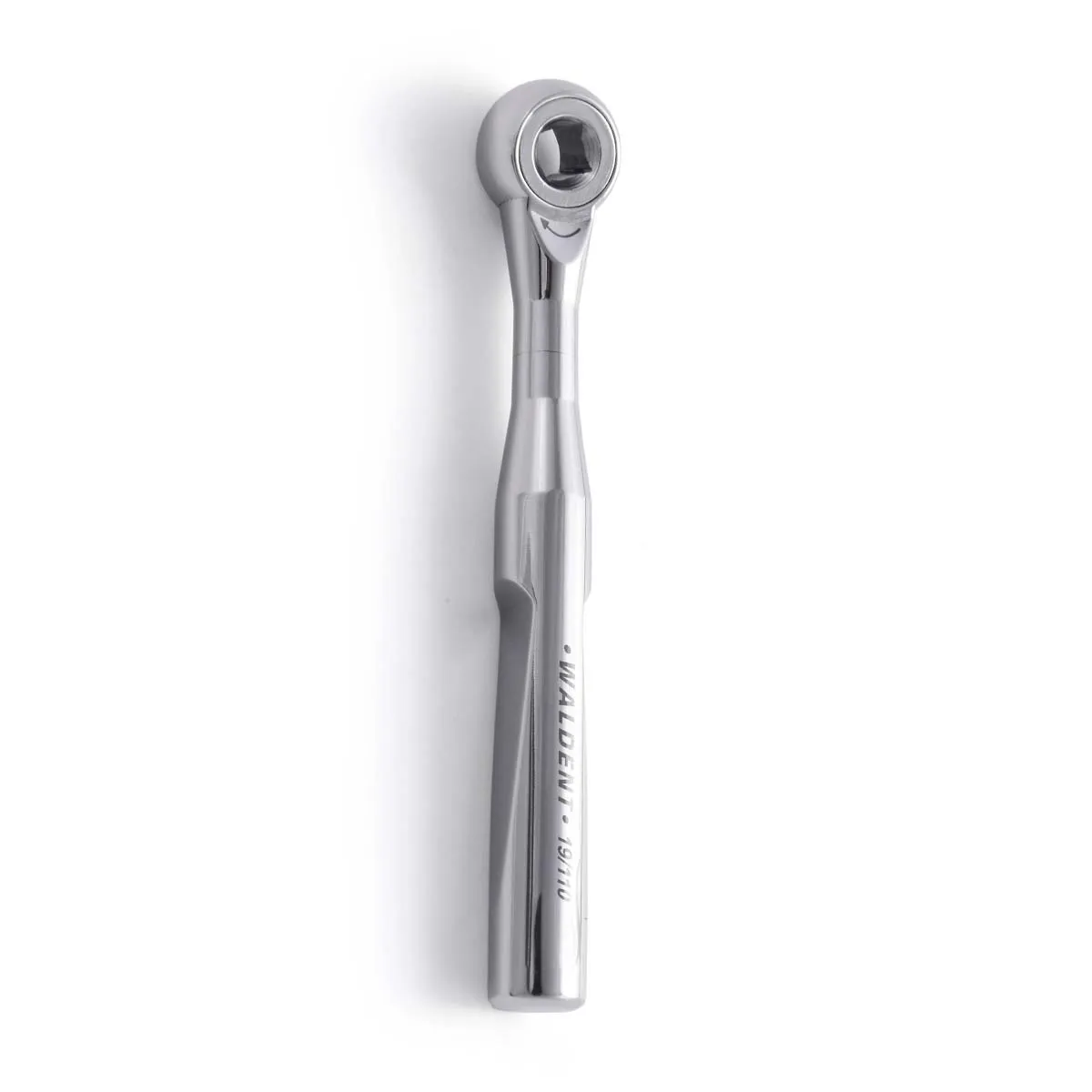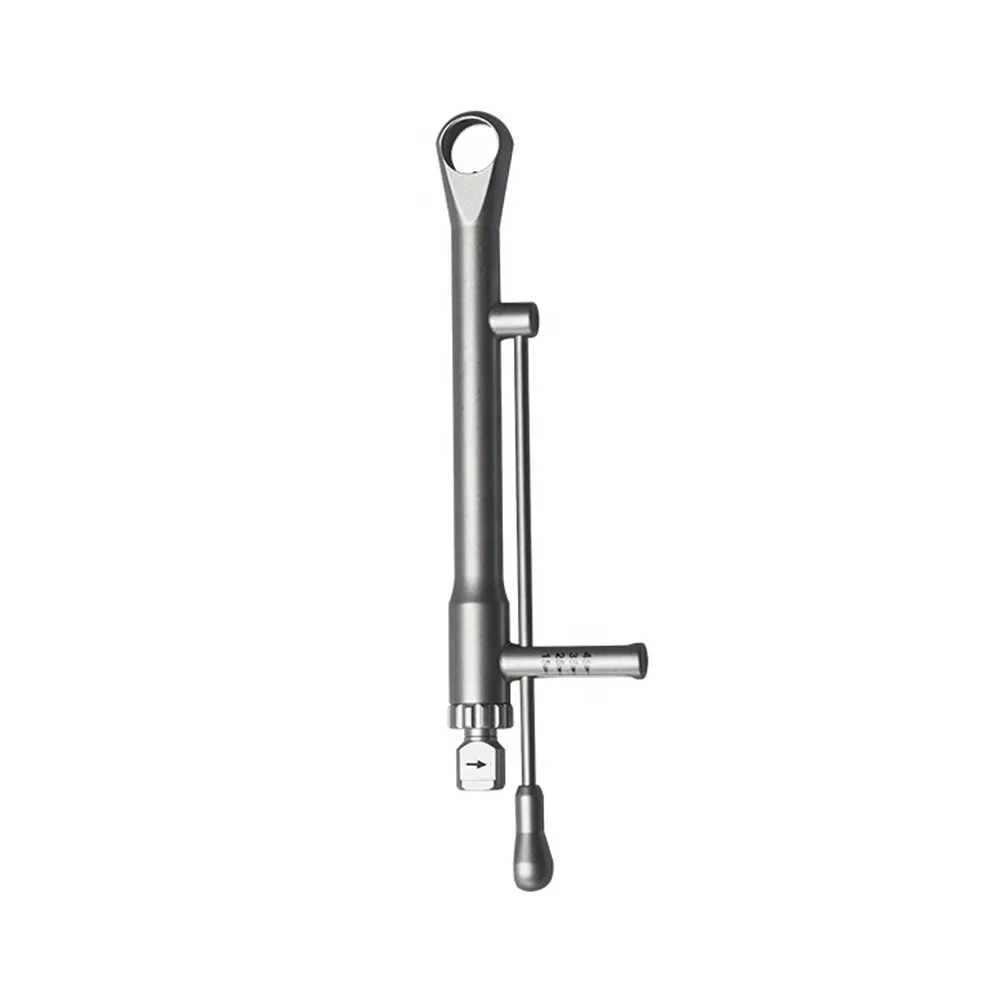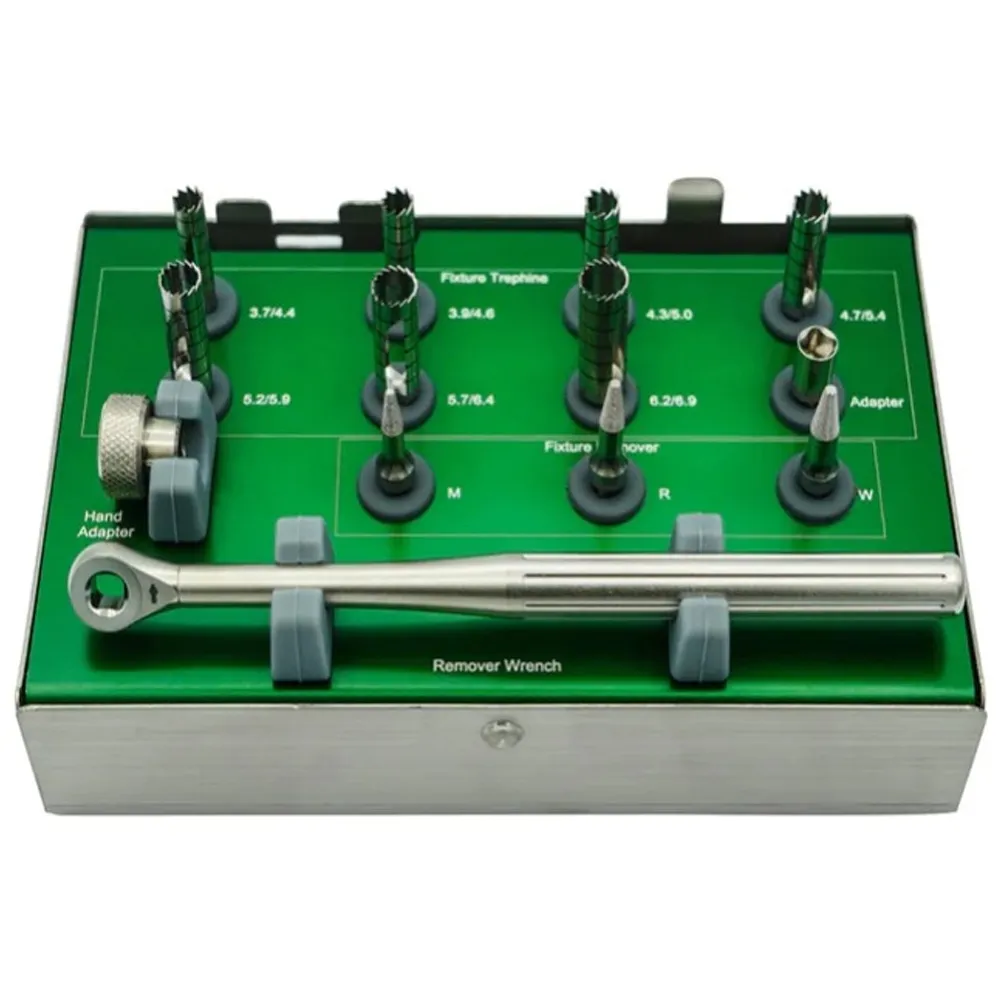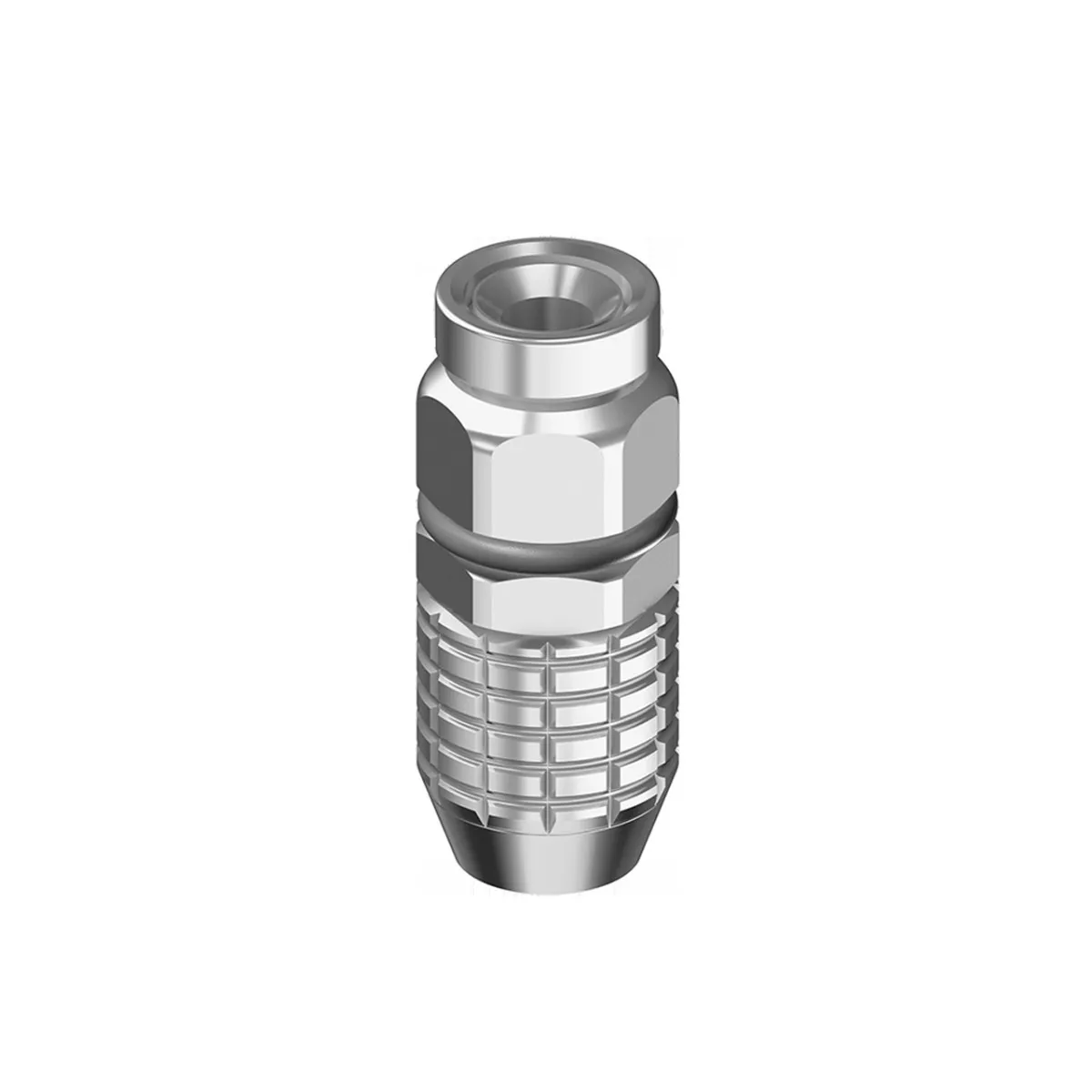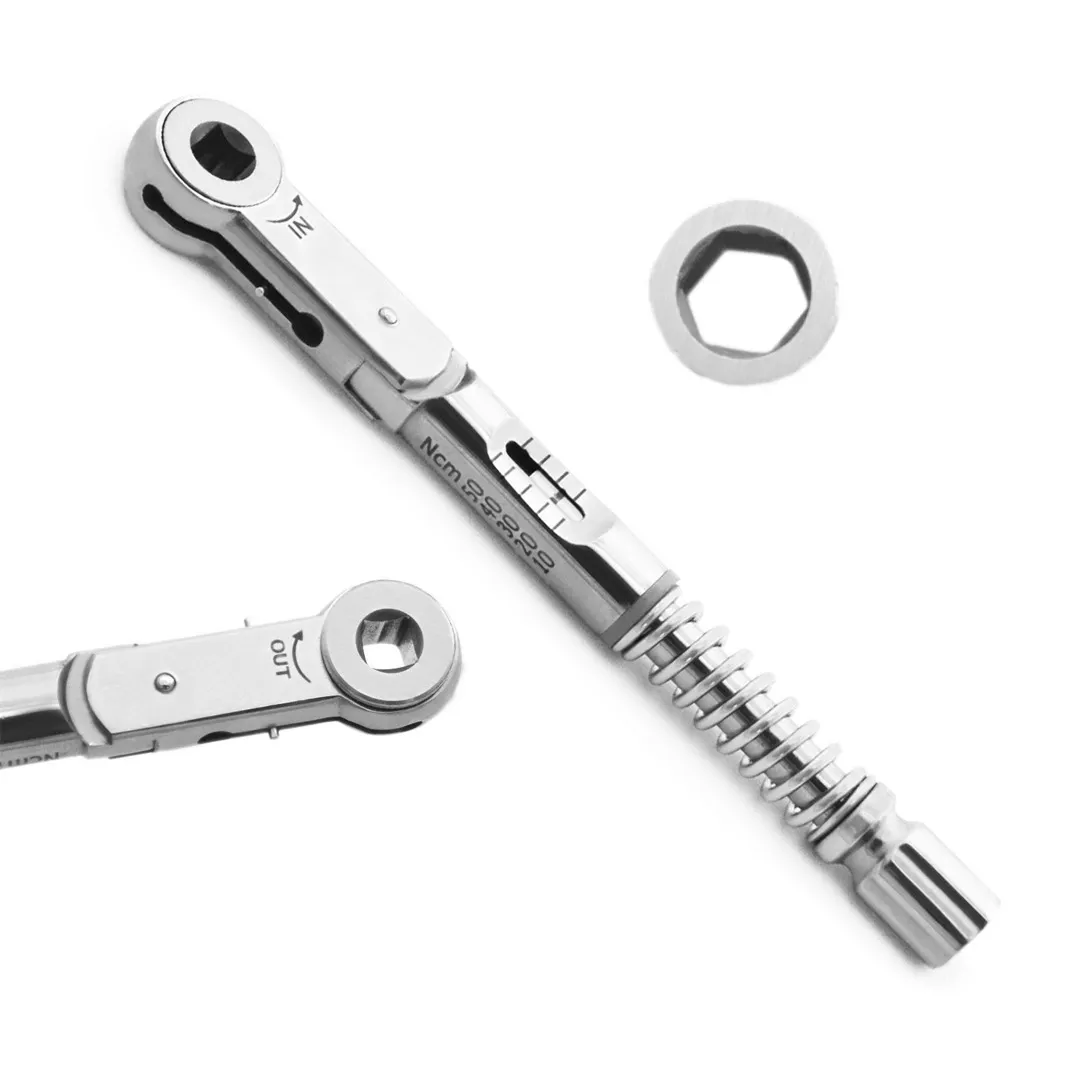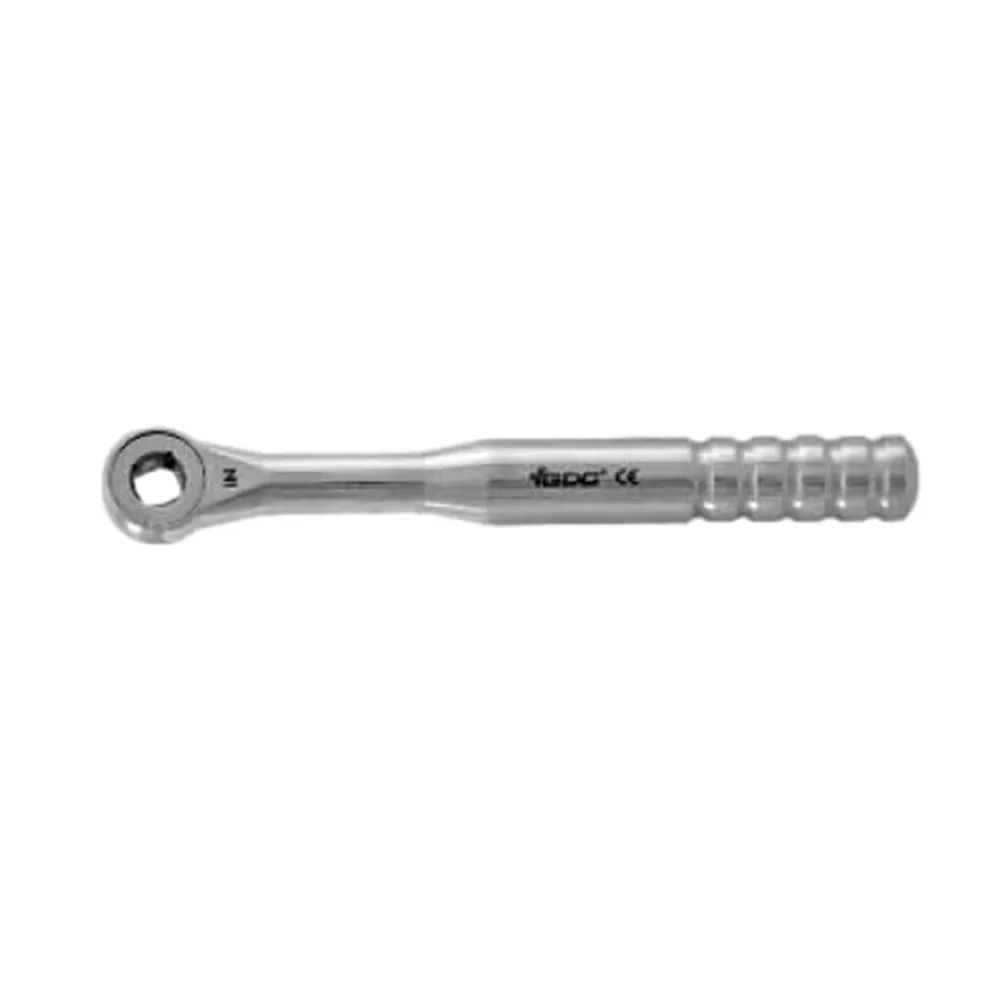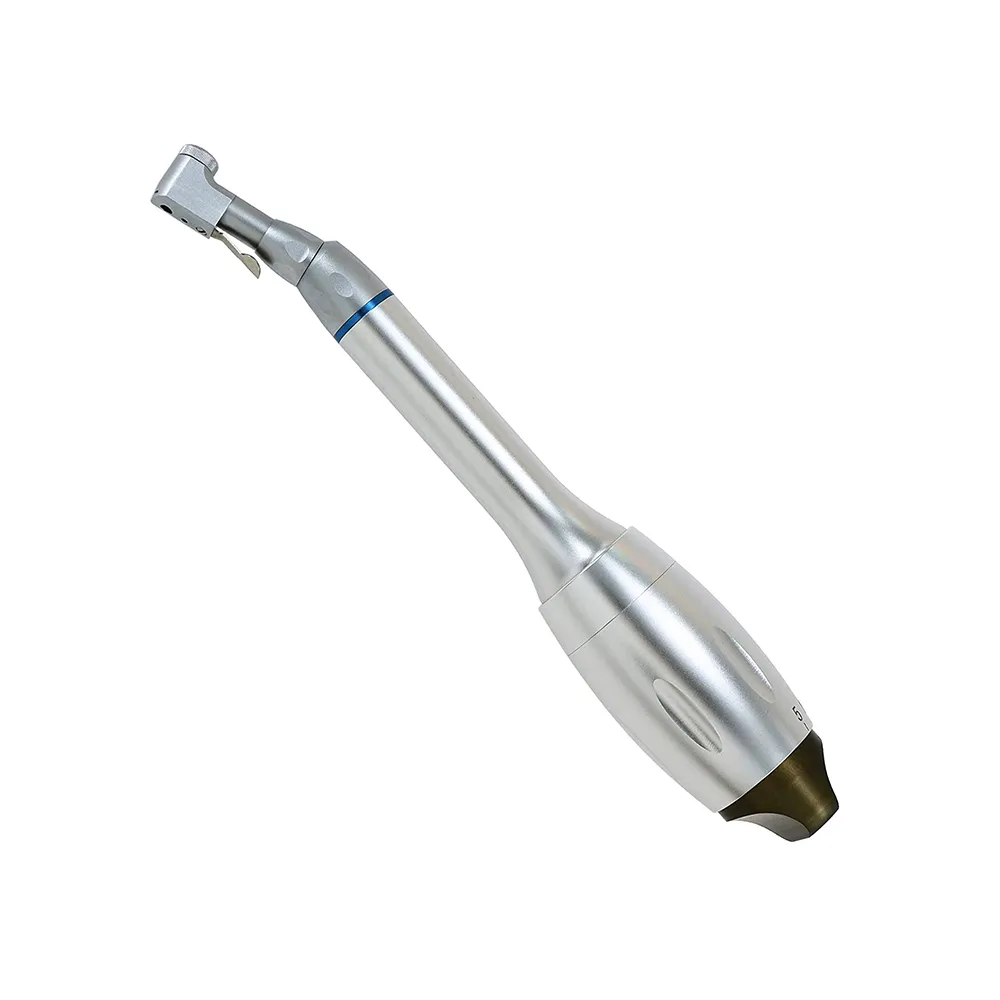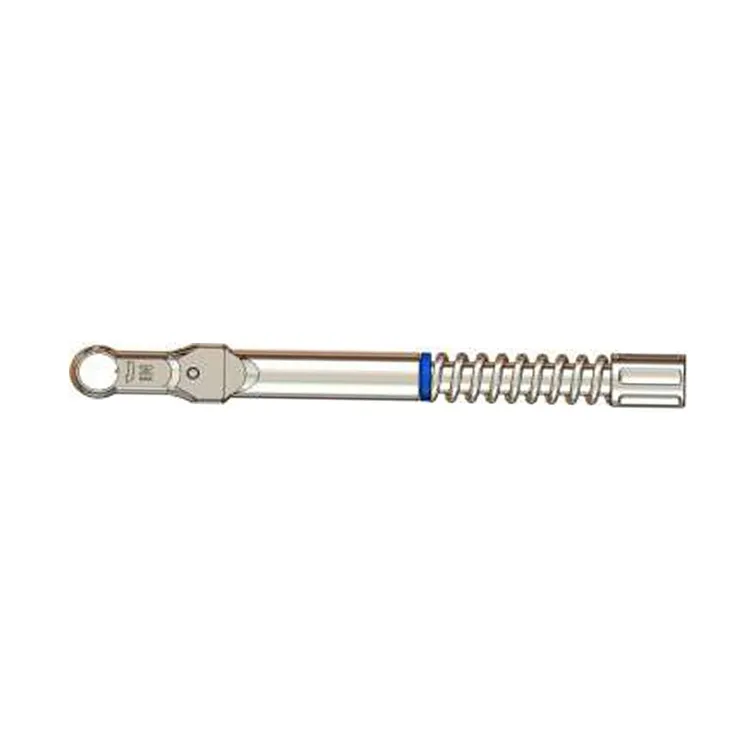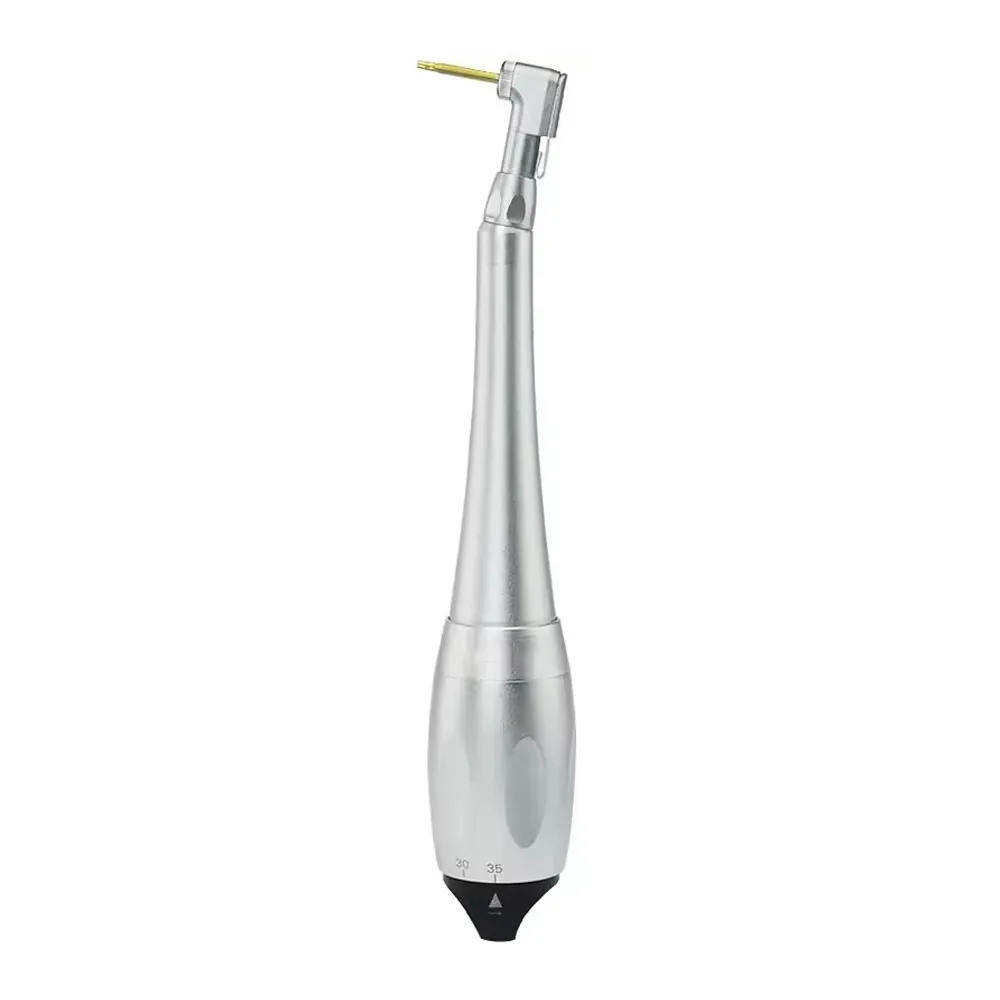Implant torque and ratchet wrenches are essential mechanical instruments used for placing and removing dental implants and components with precision-controlled torque. They ensure safe and predictable tightening of implant abutments, screws, and fixtures—minimizing the risk of component failure or overload. Available in manual and adjustable formats, these tools are indispensable in both surgical and prosthetic stages of implant dentistry.
Product Scope
This category includes:
Manual ratchet wrenches (dual and single-sided)
Adjustable torque wrenches (e.g., 10–50 Ncm, 15–45 Ncm)
Universal torque ratchets with hex driver kits
Torque adapters for surgical handpieces
Implant fixture remover kits
Clinical Importance
Controlled torque application is critical in implantology to avoid screw loosening, implant fractures, or bone damage. Torque wrenches help clinicians achieve the recommended tightening force for each component, preserving implant integrity while ensuring prosthetic stability. They are especially crucial during final abutment placement and when removing or replacing prosthetic parts.
Category Highlights
By Functionality
Manual Ratchet Wrenches: Provide tactile feedback and precision control for manual tightening of implant screws during chairside adjustments or surgery.
Adjustable Torque Wrenches: Allow users to pre-set specific torque values (e.g., 15–45 Ncm), ideal for final abutment seating or screw-retained prosthesis fixation.
Universal Torque Devices: Equipped with multi-platform drivers to accommodate various implant systems in one tool.
Torque Wrench Adapters: Convert surgical drivers into torque tools, bridging surgical and prosthetic workflows.
Fixture Remover Kits: Specialized ratchet-based systems designed for safe explantation of failing or fractured implants.
By Brand
Waldent, GDC, DentalPlant, Jullident, MCTBIO, Adin, GS Implants, and Mik Implants—offering varied torque ranges, ergonomic designs, and compatibility with major implant systems.
Explanation of Clinical Relevance
Inaccurate torque delivery may lead to prosthetic screw loosening, peri-implant inflammation, or even implant fracture. Using a torque wrench allows adherence to manufacturer-recommended torque values, especially in single-unit restorations and full-arch prosthetics. Torque wrenches also support retrievability and longevity of restorations.
Brand Sourcing
Our range features trusted names like Waldent, GDC, DentalPlant, GS Implants, Adin, Jullident, and MCTBIO. These brands are recognized for their durability, calibration accuracy, and compatibility with global implant systems.
Usage Guidelines
Manual Ratchet Wrench: Use for chairside implant abutment or screw tightening where tactile feedback is required.
Adjustable Torque Wrench: Set to specified Ncm before tightening implant components.
Universal Kits: Select the appropriate driver bit for the implant platform; use the torque scale for consistent force delivery.
Fixture Remover: Follow sequential driver protocol with counter-torque control to safely explant without bone trauma.
Ideal Users
Implantologists performing surgical placement and restoration
Prosthodontists restoring multi-unit or full-arch prostheses
Oral surgeons conducting implant fixture removals
General dentists managing chairside adjustments of implant-supported restorations
Dental laboratories testing torque compatibility of prosthetic screws
FAQs
Q. Can one torque wrench be used across multiple implant brands?
A. Yes, universal torque wrenches with interchangeable drivers can accommodate various platforms.
Q. How often should a torque wrench be calibrated?
A. Calibration is recommended every 6–12 months to maintain torque accuracy and clinical safety.
Q. Are ratchet wrenches reusable?
A. Yes, with proper sterilization and maintenance, ratchet wrenches can be safely reused over multiple cases.
















